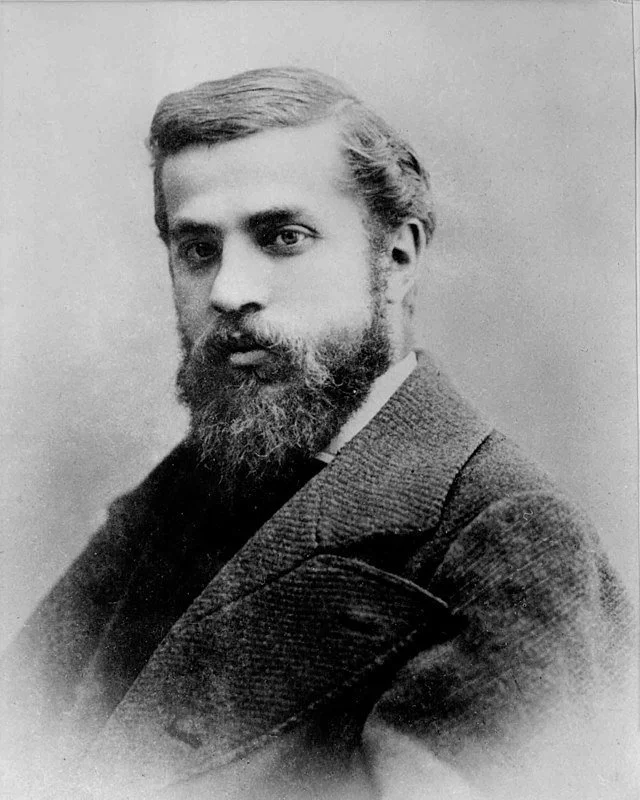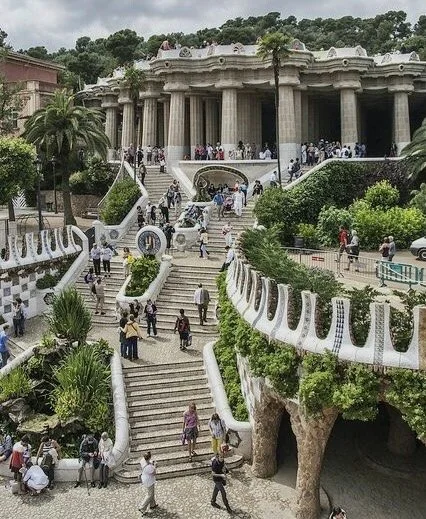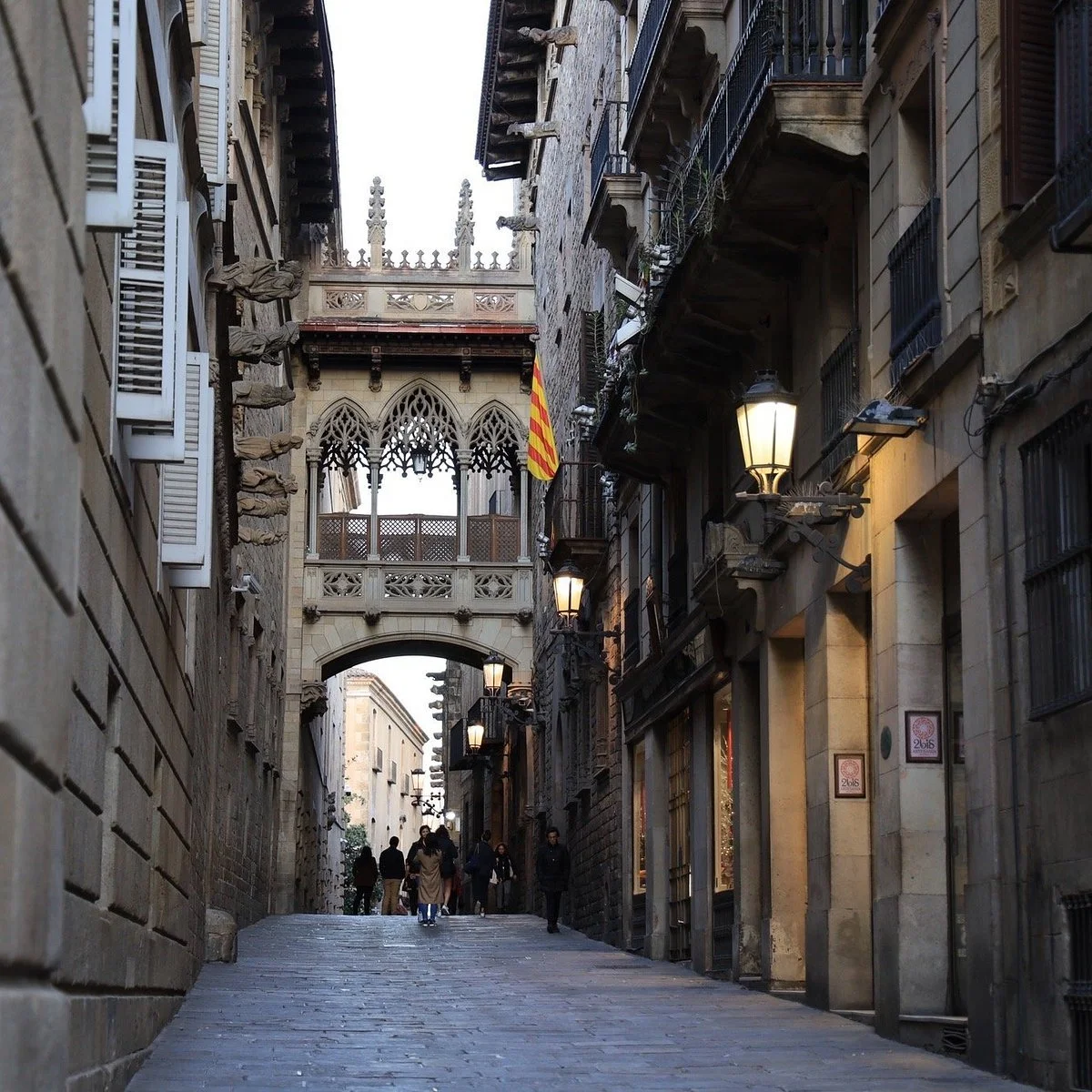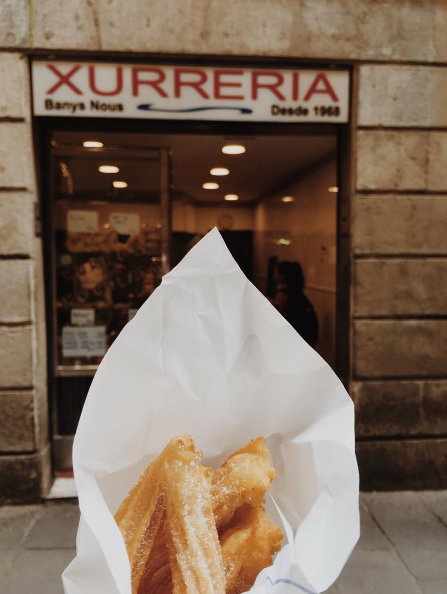BARCELONA
Barcelona is the largest city on the Mediterranean Sea and the second largest city in Spain. It is the capital of Catalonia (one of the 17 regions in Spain). Catalan and Spanish are the two languages spoken in the city. Barcelona is home to 9 UNESCO World Heritage Sites, 7 of which were created by Antoni Gaudi. The most famous of his projects is the Sagrada Familia, the huge unfinished Roman Catholic Church in Barcelona.
ANTONI GAUDI
Antoni Gaudi was a Catalan architect and designer born in 1852 in Reus, Spain. Most of his works are located in Barcelona, including his main work, the Sagrada Familia church. He was part of the ‘Modernista’ movement and his work was influenced by his passions in life: architecture, nature and religion. He rarely drew plans of his works, instead preferred to create them as three dimensional scale models. Gaudi’s first projects were the lampposts he designed for the Placa Reial. He dedicated the last years of his life to the “Cathedral of the Poor.” On June 7, 1926, Gaudi took his daily walk to the Sant Felip Neri church and was struck by a tram. He died shortly after at the age of 73.
Eixample/Gracia
-

Sagrada Familia
The largest (unfinished) Catholic Church in the world. Construction began in 1882 by architect Villar, Antoni Gaudi took over in 1883. Gaudi dedicated his life to the project until his death in 1926. Less than a quarter was finished when he died. The final tower is projected to be finished in 2026.
-

Casa Batllo
Joseph Batllo, a prominent businessman, purchased the home in 1903. He granted creative freedom to Antoni Gaudi to reform the home. Marine inspired, the home evokes nature and fantasy.
-
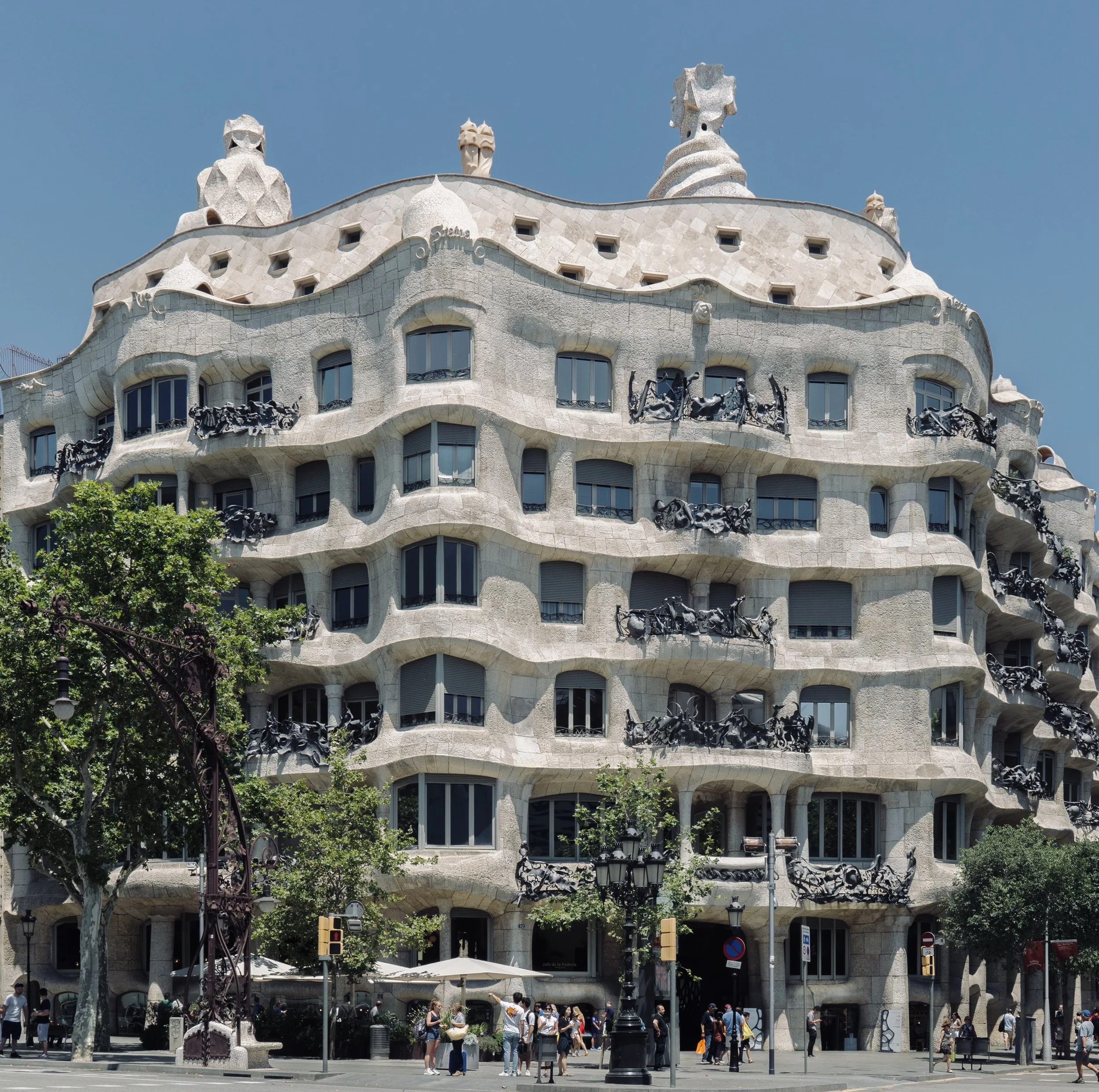
Casa Mila
Antoni Gaudi designed and built this home for Pere Mila 1906-1912. It was his last private residence project.
*Be sure to go up to the roof for incredible views
-
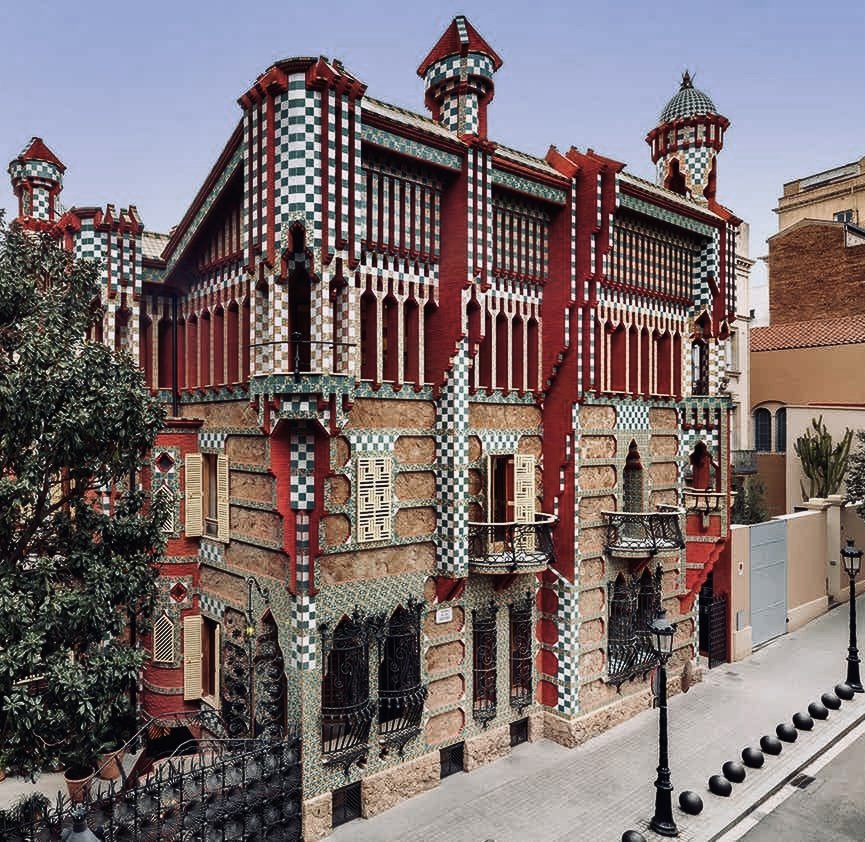
Casa Vicens
Casa Vicens was Antoni Gaudi's first important masterpiece commission for Manel Vicens in 1883. The work belongs to Gaudi’s orientalist period in which he made a series of works inspired by the art of the Near and Far East, (India, Persia, Japan) as well as Hispanic Islamic art.
PARK GUELL
Eusebi Guell asked Antoni Gaudi to design an estate for wealthy families. The project, located on Carmel Hill, was developed between 1900-1914. Gaudi moved to a home in the park in 1906 and lived there the last 20 years of his life. It opened as a public park in 1926 and includes beautiful gardens, whimsical sculptures, incredible mosaic.
El Born
-

Basilica of Santa Maria del Mar
The Basilica was built in just 55 years, from 1329-1384 and is the only surviving church in the pure Catalan Gothic style.
-

Picasso Museum Barcelona
Pablo Picasso was a Spanish painter, sculptor, printmaker, ceramicist, and stage designer born in 1881. He is one of the most influential artists of the 20th century.
The museum is housed in five adjoining medieval palaces in the Old City of Barcelona and includes over 4,000 of Picasso’s works.
-
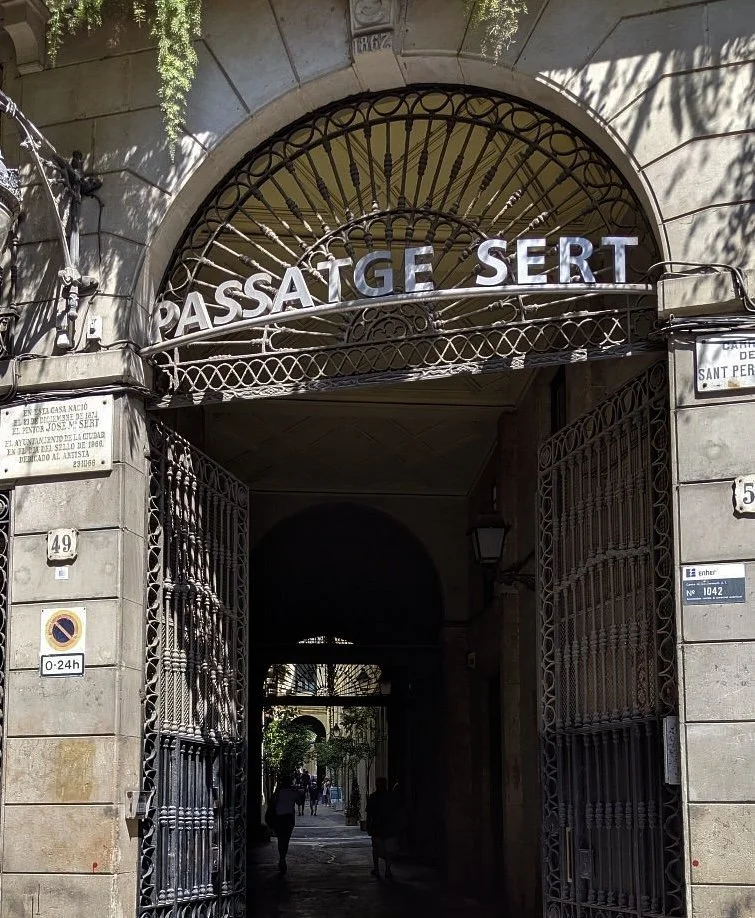
Passatge de Sert
A pedestrian passageway that was once part of a large textile factory owned by the Sert family. It’s now a quiet street with shops, cafes and street art; a hidden gem.
-
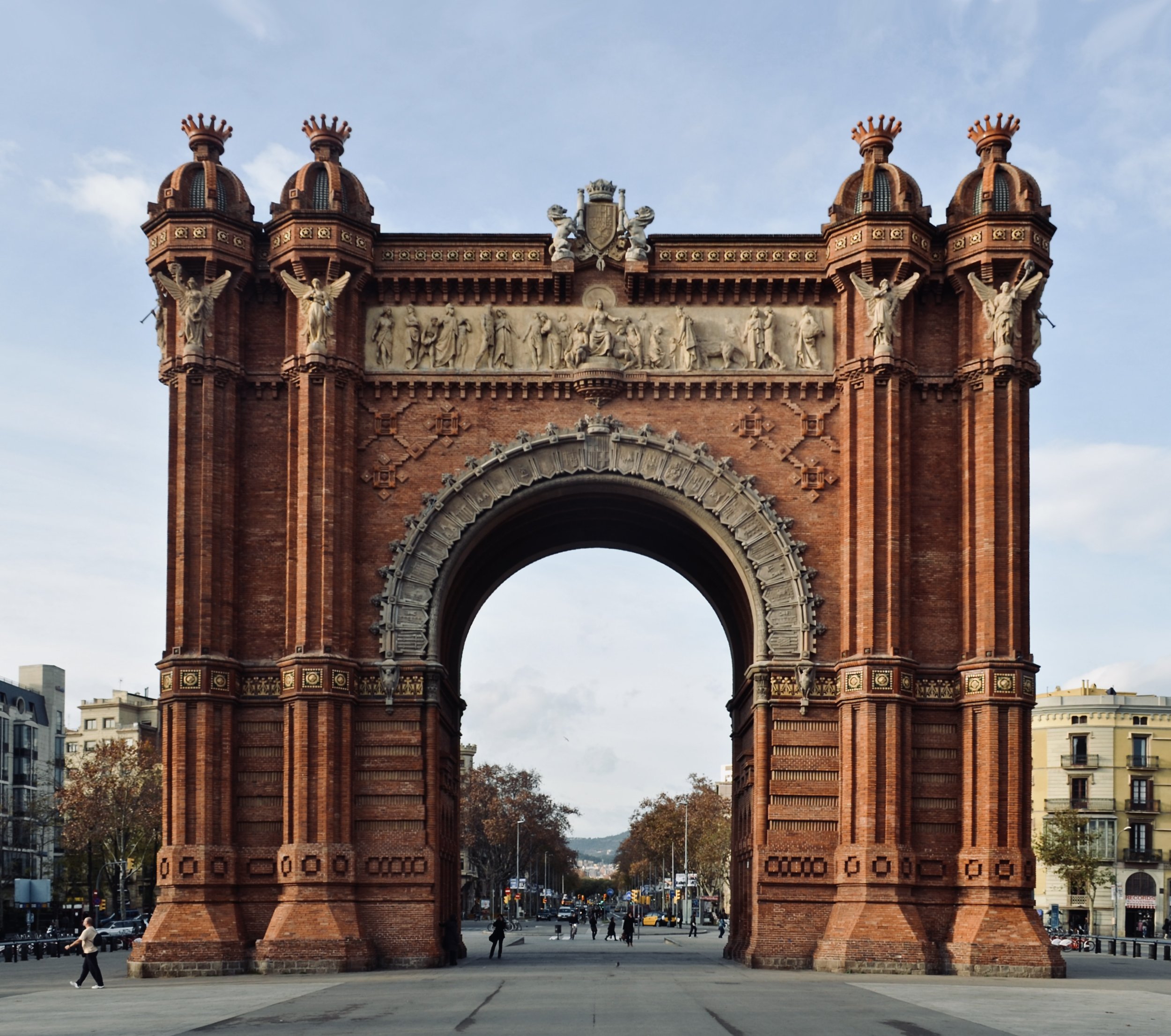
Arc de Triomf
A memorial arch built by architect Josep Vilaseca as the main access gate for the 1888 Barcelona World Fair. The front frieze contains the stone sculpture ‘Barcelona rep les nacions’, Catalan for “Barcelona welcomes the nations.”
LA BARCELONETA
La Barceloneta is a lively neighborhood known for its sandy beaches. It was virtually uninhabited until the mid 18th century. In 1754, construction of the first houses began. The clock tower was built in 1772 within the Fishermen’s Wharf. La Barceloneta is regarded as one of the best places to try fresh fish or paella in Barcelona.
Gothic Quarter
-

Cathedral of Barcelona
The Barcelona Cathedral is the seat of the Archbishop of Barcelona in Catalonia. It was constructed between the 13th-15th centuries. It is dedicated to the Holy Cross and Eulalia of Barcelona, a young virgin martyr who suffered martyrdom during Roman times in the city.
-

Placa Reial
The Royal Square is a popular meeting place during the annual summer festival, La Merce, and during other celebrations such as New Year’s Eve. It is home to many restaurants and famous nightclubs. The square’s lampposts were designed by Antoni Gaudi.
-
Pont del Bisbe
Bishop’s Bridge is one of Barcelona’s most photographed pieces of architecture, the Gothic-style marble bridge. It was created in the 1920’s by Modernista architect Joan Rubio i Bellver, who added the underside skull-and-crossbones when his plans for other buildings in the Barri Gothic were turned down.
-
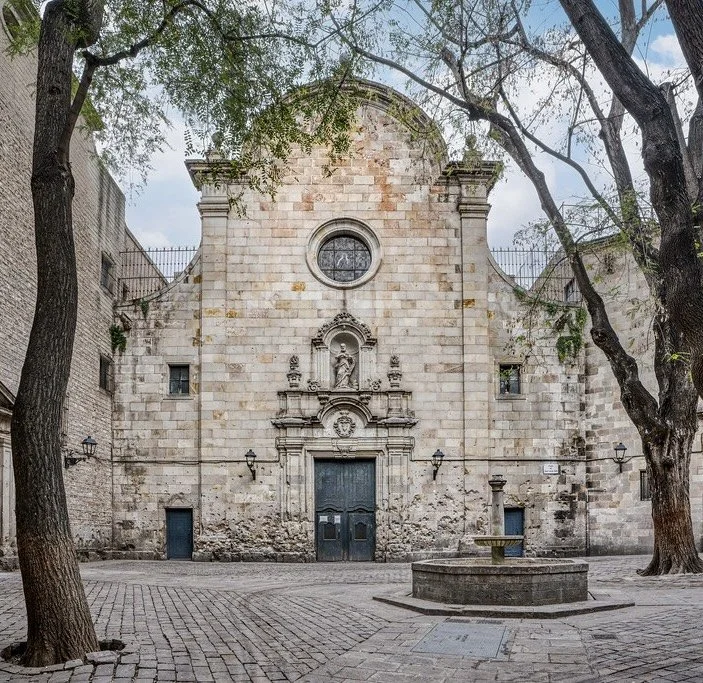
Placa de Sant Felip Neri
A small square in the Gothic Quarter where the Church of Saint Philip resides. In the center of the square is a fountain, a symbol of life.
BARCINO
Located in the Placa Nova, this visual poem by Joan Brossa stands in front of Barcelona’s Roman wall of the former Roman City. The letters spell out the word, Barcino, the Roman name of Barcelona. The ideogram was created in 1992 and put in place in 1994, a few years before his death. You can visit Roman Barcino, one of the most extensive underground Roman ruins in the world, located in the Barcelona History Museum.
El Raval
-
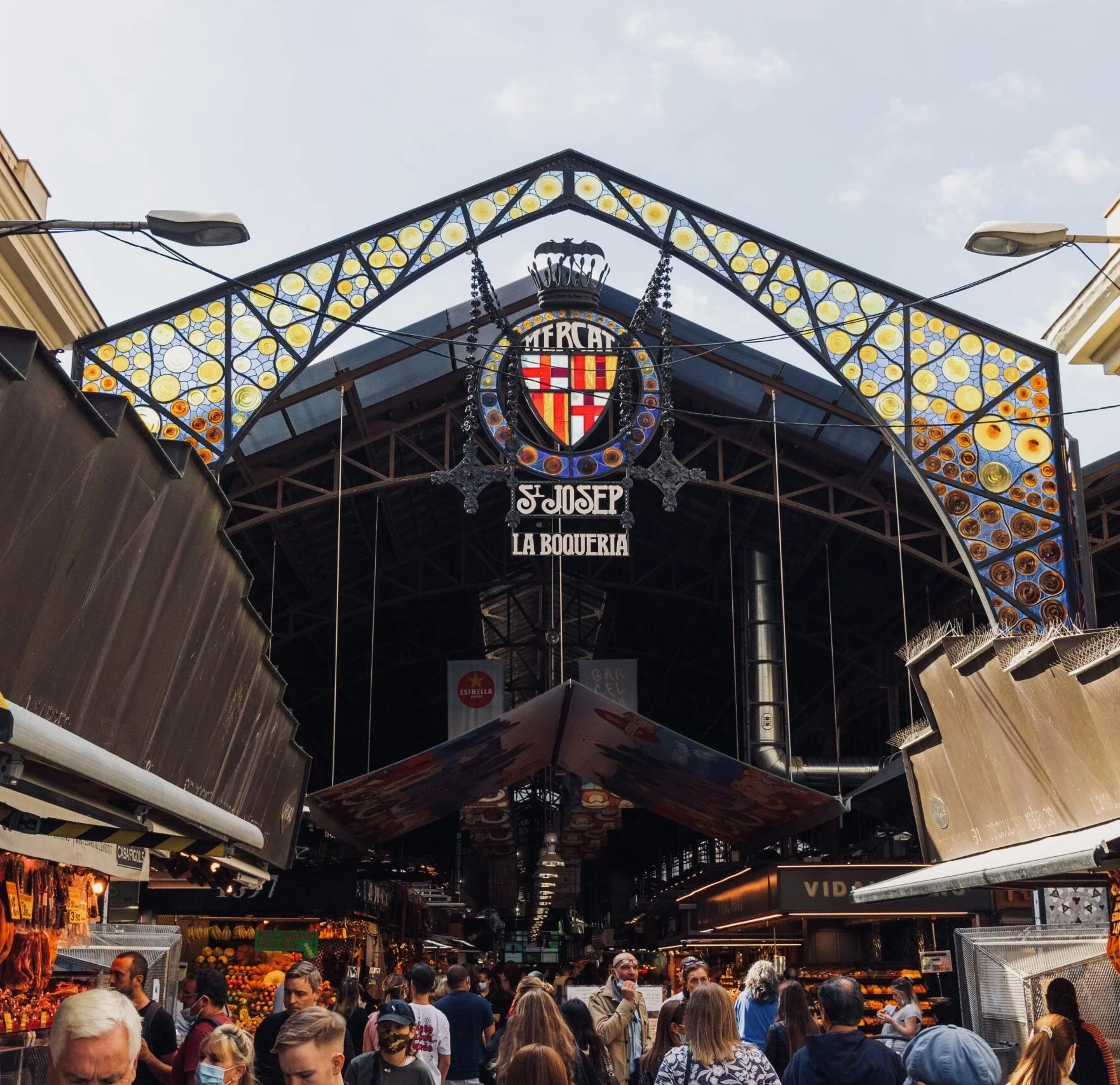
Mercat de la Boqueria
La Boqueria is a large public market with a diverse selection of goods. The first mention of the Boqueria market dates back to 1217, when tables were installed near the old city gate to sell meat. From 1470 onwards, a pig market was held at this site. A new structure was built and opened in 1853.
-
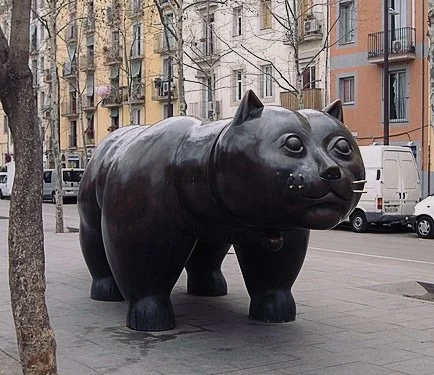
El Gat de Botero
Standing tall as a cherished icon to the neighborhood is the Cat by artist, Fernando Botero. The locals call it ‘The Fat Cat.’ The cat roamed the streets of Barcelona for sixteen years until it discovered its home on Rambla del Raval in 2003.
-

Palau Guell
A mansion designed by Antoni Gaudi for the industrial tycoon Eusebi Guell built between 1886 and 1888. The home is centered around the main room for entertaining high society guests. Guests entered the home in horse-drawn carriages through the front iron gates.
-
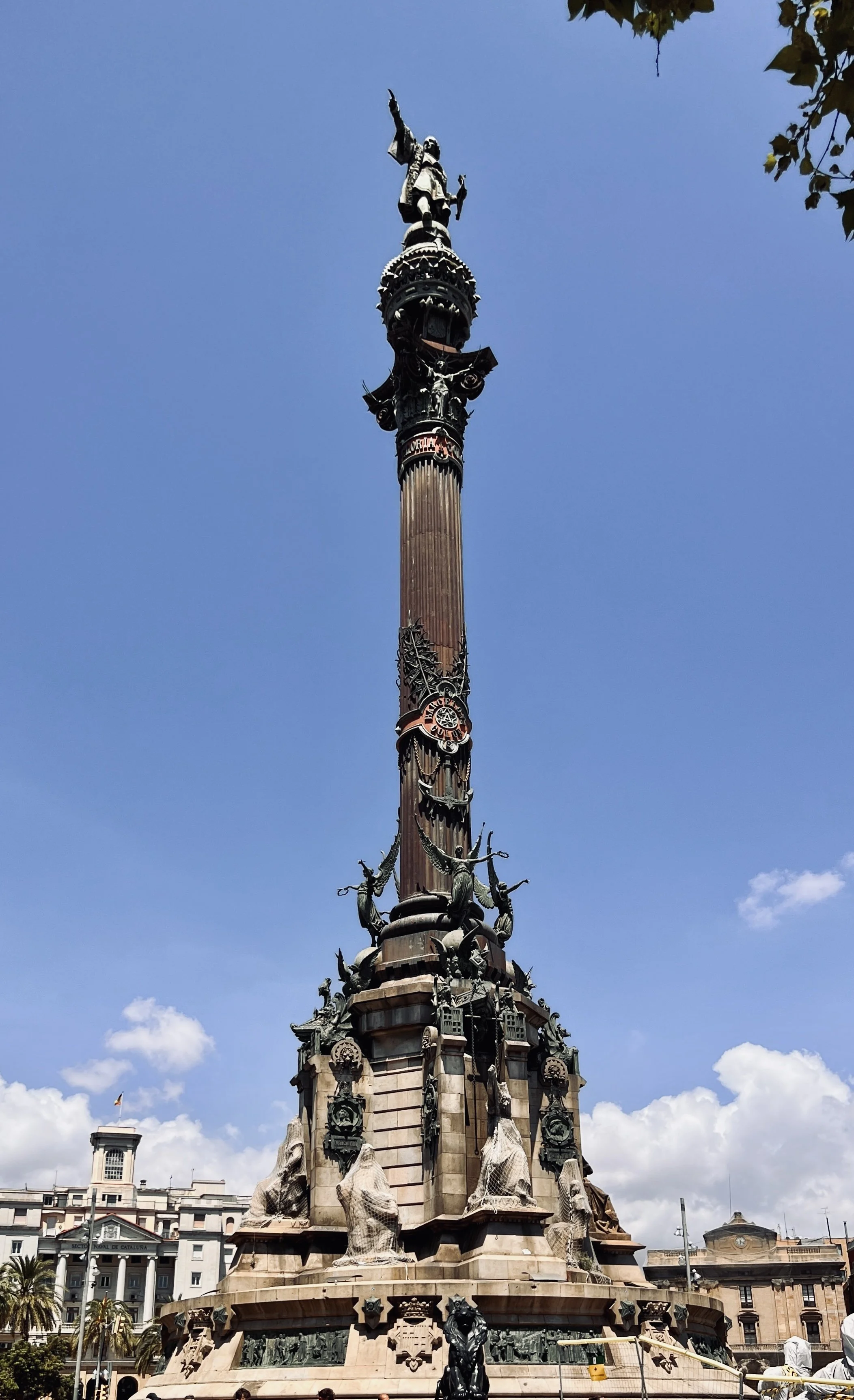
Columbus Monument
A statue of Christopher Columbus, sculpted by Rafael Atche, pointing towards the New World with his right hand. It was constructed for the Barcelona Exposition in 1888 and serves as a reminder that Columbus reported to Queen Isabella I and King Ferdinand V in Barcelona after his first trip to the new continent.
LA RAMBLA
A tree-lined pedestrian street that stretches for 3/4 mile between the neighborhoods of Barri Gotic and El Raval. You will find shops, restaurants and markets along the street and it can be quite crowded during the height of tourist season.
Montjuic
-

Montjuic National Palace
A beautiful building on the hill of Montjuic. It was the main site of the 1929 International Exhibition. It has been home to the National Art Museum of Catalonia since 1934.
*Sit on the steps for beautiful views of Barcelona
-
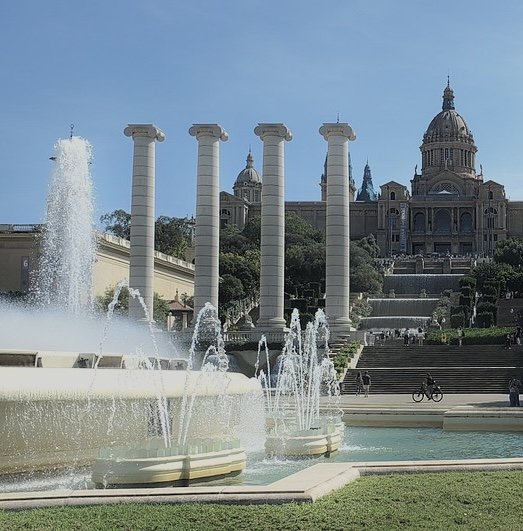
Magic Fountain of Montjuic
Constructed for the 1929 International Exhibition. It is situated below the National Palace; famous for sound and light shows.
-

Barcelona Olympic Park
Built for the 1992 Summer Olympic Games located on Montjuic Mountain. The giant white Olympic torch, an abstract sculpture depicting an athlete holding a torch (actually a tall telecommunications tower).
-

Miramar Gardens
Located on Montjuic Mountain, the gardens were landscaped from 1919-1923 for the 1929 Barcelona Universal Exposition. They were designed by French engineer, Jean-Claude Nicolas Forestier, who introduced the concept of Mediterranean gardens to Barcelona. The gardens offer amazing views of the city.
JOAN MIRO
Joan Miro, a Catalan Spanish painter, sculptor, and ceramist born in Barcelona in 1893. He was notable for his interest in the subconscious mind, reflected in his re-creation of the childlike. He combined abstract art with Surrealist fantasy. His work is filled with symbols including women, birds, and stars. He produced around 2,000 paintings, 500 sculptures, 400 ceramics, 5,000 drawings and 1,000 lithographs. The Joan Miro Museum is located on Montjuic Mountain.
A Taste of Barcelona
-
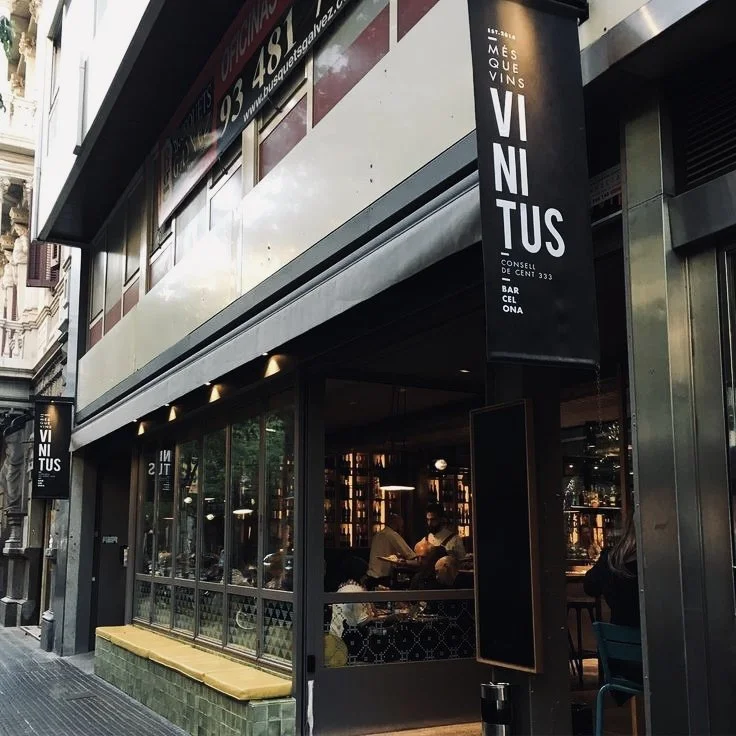
Vinitus
A modern take on classic tapas. Some of the best in the city.
-

Guell Tapas
A popular tapas restaurant in the Raval district serving traditional dishes such as paella and tapas.
-

Quimet & Quimet
Originally a wine cellar, this tiny place has been run by the Quimet family since 1914. Standing room only, but one of the most popular tapas bar.
-
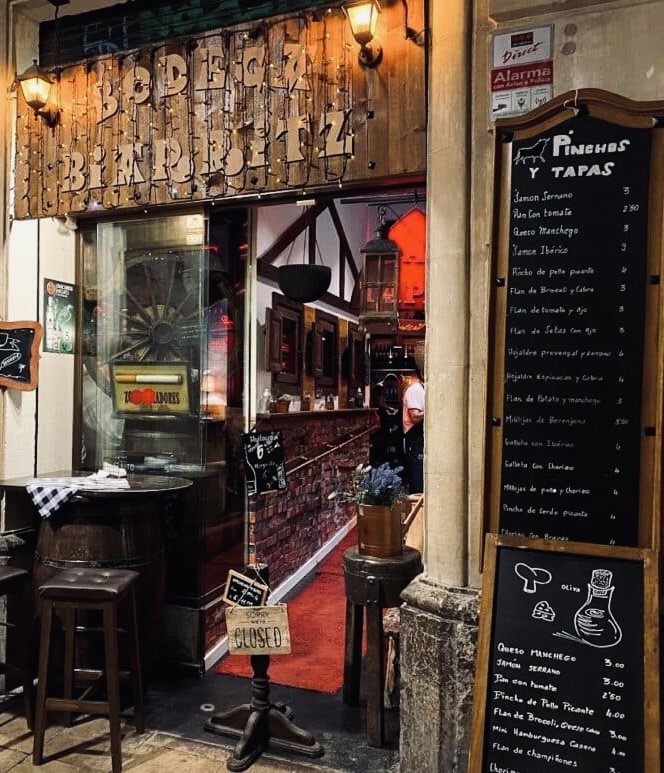
Bodega Biarritz 1881
A cosy restaurant offering traditional tapas and small dishes.
-
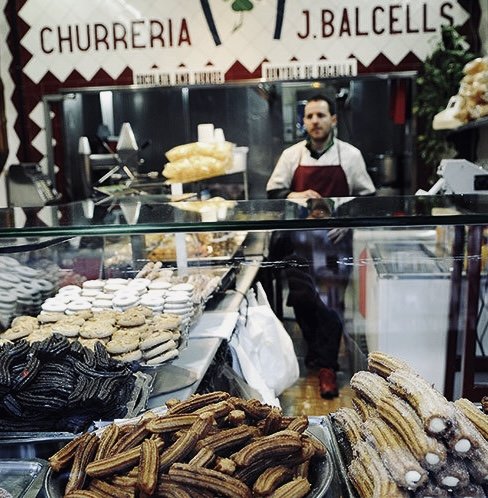
Xurreria Trebol
A family-owned churreria that is possibly the oldest in the city. Juan Bacells and Cecilia Martinez started making churros in the 1940’s and opened the shop around 1950.
-
Xurreria Manuel San Roman
Owner Manuel San Roman, whose grandmother was a xurrera, has been making churros since 1968.
-
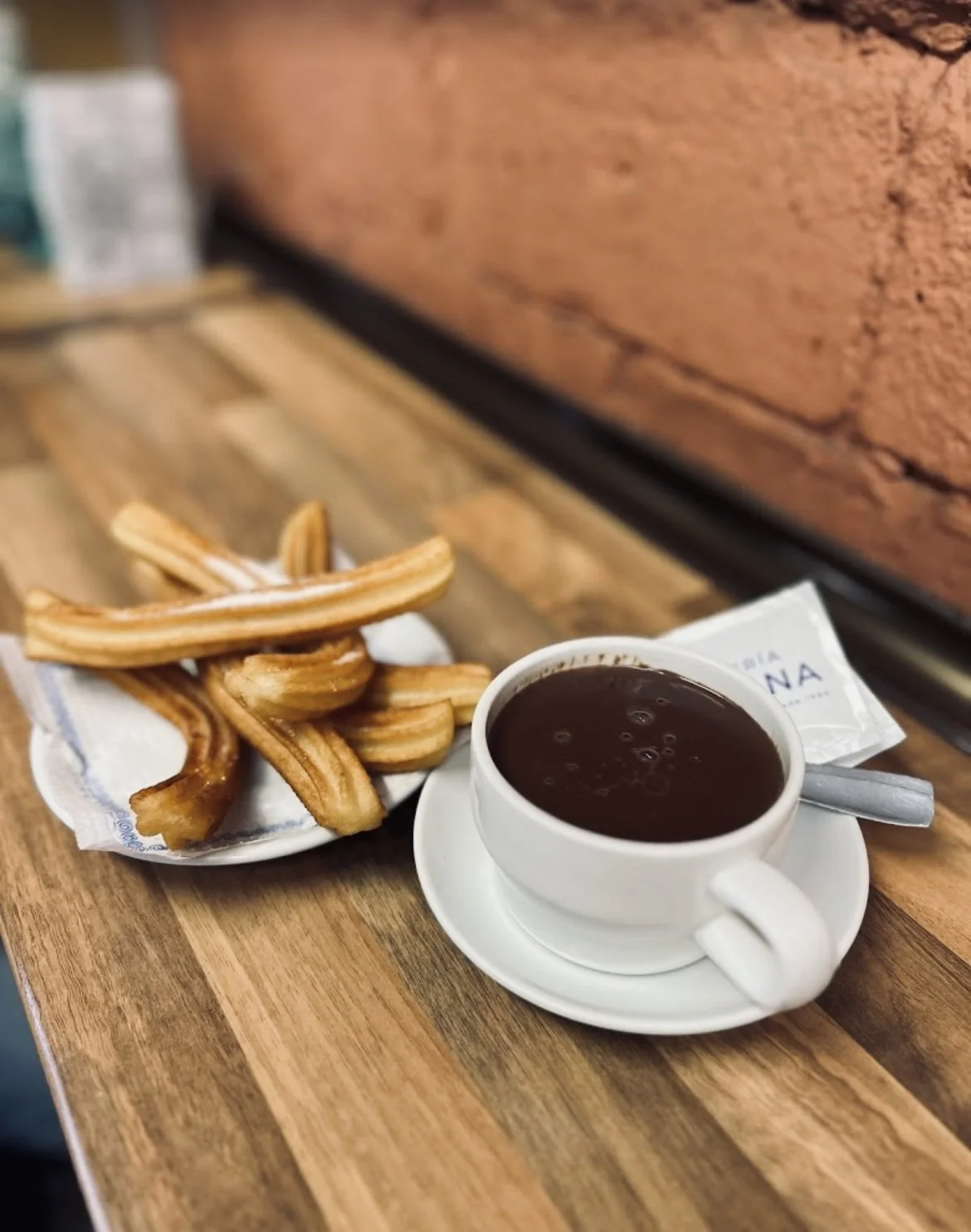
Churreria Laietana
A family-owned churreria known for their spiral churros dipped in chocolate.
